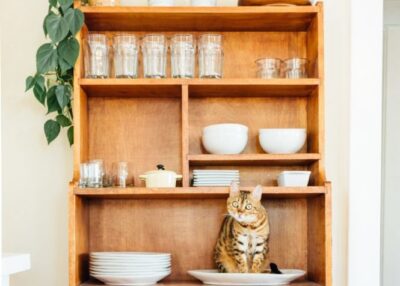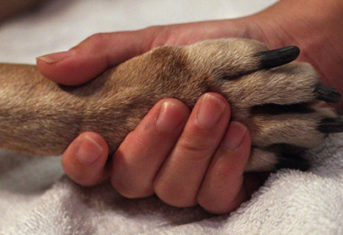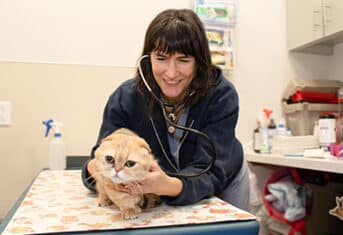How to feed your cat

How to feed your cat
Last fall, the American Association of Feline Practitioners released documents from an expert panel of feline specialists including a client brochure entitled “How to feed a cat.”
Since one contributing factor to feline longevity is an ideal body condition, I thought summarizing the panel’s recommendations would be helpful to feline families.
Nota bene, the point of these recommendations is not to help you choose between canned versus dry food, or premium versus grocery store brands, but how to take normal cat behavior into consideration when choosing feeding methodology. Feeding strategies that capitalize on your cat’s normal predatory drive will enhance your cat’s health and well-being.
Feed frequently
In the wild, cats hunt multiple times per day to meet their daily calorie requirement. Most housecats are fed one or two large meals per day. This meal feeding method leaves your cat unsated and with time on her paws to pester you for snacks, irritating you and packing the pounds on her. An automatic feeder will help in this regard, since it can dispense multiple small meals per day, but it will not be as mentally challenging as puzzle feeding or forage feeding.
Use puzzle feeders
Hunting for small rodents is a mentally challenging activity for cats. Eating tasty, soft food from a conveniently placed bowl offers no mental challenge. Puzzle feeders, also known as food puzzles, are objects that hold and release food when your cat manipulates the feeder. No matter how smart your cat is, expect a learning curve while she solves the puzzle feeder. Monitor your cat’s weight as she learns to use the feeding puzzles to sure she’s getting enough calories.
Try forage feeding
And no, I don’t mean feed your cat a bale of hale. Cats are obligate carnivores, meaning they must eat meat as their main protein source. Here I use the word forage as verb meaning “to hunt.” Since cats are programmed to hunt for their food, instead of putting the food in a bowl, make your home a cat buffet by putting bowls in various locations. Better yet, put puzzle feeders throughout your home and let your cat forage to find out where lunch is being served today!
Optimal feeding locations
Avoid putting food too close to the location of your cat’s litter box as cats do not like to eat near the box. Be sure the food location works for all cats. Cats don’t necessarily understand sharing and if there are not enough opportunities to forage, some cats may go hungry. Some cats fare better if they are fed individually. Don’t forget to use your cat’s elevated space (window sill perch or cat tree) as one of the feeding locations.
Ready to get started using puzzle feeders? Try your hand at making some before you shop.

































